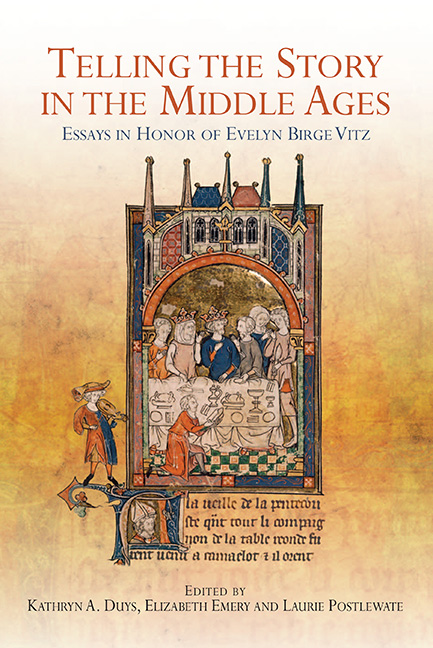The Audience in the Story: Novices Respond to History in Gautier de Coinci’s Chasteé as nonains
Published online by Cambridge University Press: 17 June 2021
Summary
Gautier de Coinci shaped his great Marian collection, the Miracles de Nostre Dame, as one long storytelling session, and like all good storytellers he incorporated personally meaningful allusions to engage his audience and stimulate a lively response. His listeners and readers were many – highborn men and women, lay and clerical, all friends – but foremost among them were his neighbors, the nuns of Notre Dame de Soissons. He dedicated his work to them at the heart of his collection within two monumental poems, the ‘Miracle of the Chaste Empress’ and its commentary, Gautier's sermon on chastity, La Chasteé as nonains, which he composed not long after the resolution of the scandalous marital struggles of the king and queen of France, Philip II Augustus and Ingeborg of Denmark. Since the nuns had harbored Ingeborg in their monastery when the royal marriage crisis was most acute, Gautier evoked the two chaste, repudiated queens – the Empress of Rome and Ingeborg – as exemplar and counter-example, and staged the nuns’ response to their stories in a song that he inserted at the end of his sermon. It celebrates sacred vows, marital and monastic, and passes judgment on he who disdained them: Philip Augustus. The sequence of story and commentary, with its interpolated nuns’ song, together form a skilled storyteller's book-bound performance complete with simulated audience response.
The nuns’ song, La Fontenele i sort clere, is lively and lopsided, and has puzzled scholars for nearly a century because its extensive formal irregularities are so uncharacteristic of a master lyricist like Gautier. Gérard Gros, however, sees the irregularities as purposefully designed to represent the novices’ amateur lyrical response to Gautier's sermon-commentary on the empress miracle: ‘Le lecteur a sous les yeux une chanson non pas disloquée, mais peu à peu s’articulant autour de la défense et illustration du mariage mystique. Anticipant sa mise en oeuvre alors qu’il rime son sermon, l’auteur feint l’improvisation.’ The present essay examines how the song's eccentricities – its formal irregularities and patchwork of themes – not only lend it a playful and impromptu air, but also make Gautier's historical commentary appear to flow naturally from the mouths of the young nuns. The song is at once a playful answer to the mal mariée that recalls the repudiated queens’ dismal marriages, a disjoint parody of the satirical chanson de nonne and a wedding celebration for novices.
- Type
- Chapter
- Information
- Telling the Story in the Middle AgesEssays in Honor of Evelyn Birge Vitz, pp. 77 - 92Publisher: Boydell & BrewerPrint publication year: 2015



